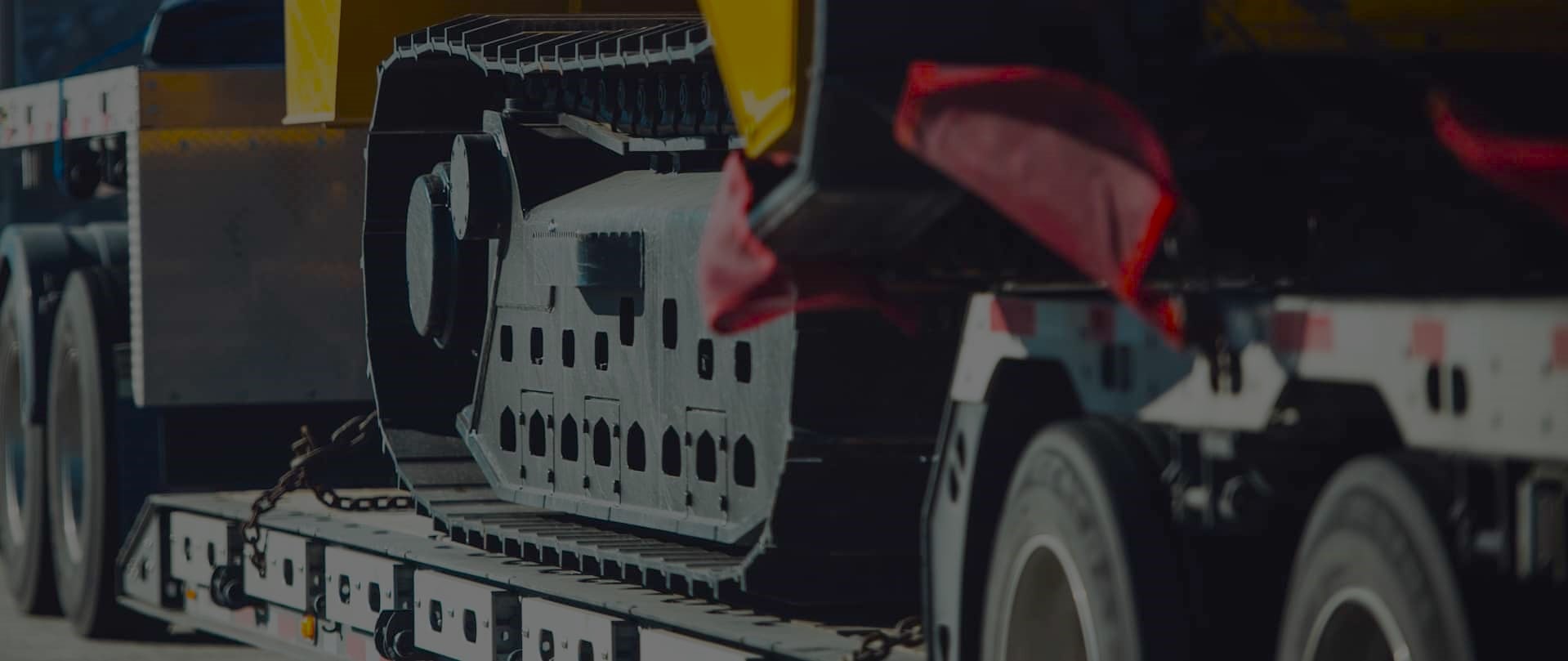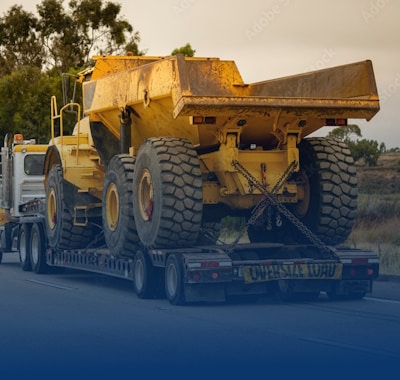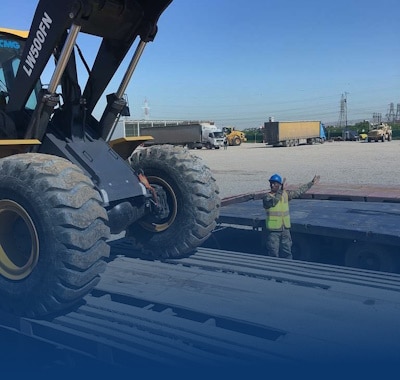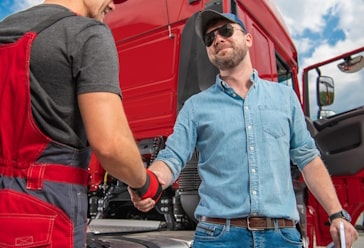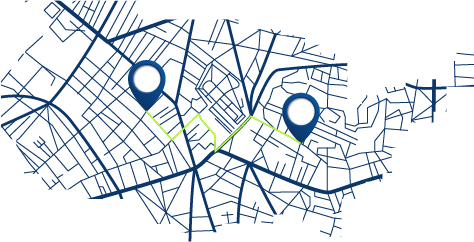Transporting Tracked Loaders & Skid Steers: Our Top Safety Tips
Freedom Heavy Haul can offer expedited Pickup and Delivery for any size shipment anywhere in the USA. Contact us today for No Hassle, No Pressure Pricing.
We specialize in moving heavy equipment, like tracked loaders and skid steers. Our team follows the best practices to keep your equipment safe. We aim to offer reliable and expert heavy hauling services.
Knowing safety tips is key when moving heavy equipment. We’ll help you from start to finish, ensuring a safe journey. For more on choosing a transport service, check out our heavy equipment transportation page.
Understanding the Challenges of Heavy Equipment Transportation
Transporting heavy equipment like tracked loaders and skid steers is tough. Knowing the rules for moving tire-loaded equipment is key to safety. With the right skills, we can beat these challenges.
Big equipment can lead to accidents or damage on the move. Weather and road conditions also matter a lot. Our team plans carefully to keep everything safe.
Common Risk Factors in Equipment Transport
- Equipment size and weight
- Weather conditions
- Road conditions
Knowing these risks helps us transport heavy equipment safely. We can avoid dangers and make sure everything goes smoothly.
Impact of Weather and Road Conditions
Weather and road conditions can affect heavy equipment transport a lot. Bad weather can make roads slippery and increase accident risks. Road problems like potholes can also be dangerous.
| Weather Condition | Risk Level |
|---|---|
| Heavy Rain | High |
| Snow | High |
| Potholes | Medium |
By knowing how weather and road conditions affect transport, we can plan better. This ensures a safe and successful move.
Essential Pre-Transport Equipment Inspection Guidelines
Transporting tire-loaded equipment safely is key. Pre-transport inspection is not just a rule; it’s vital for safety. By sticking to transporting tire-loaded equipment regulations, you avoid damage and ensure a smooth trip.
A good pre-transport check includes looking for damage, checking tire pressure, and making sure safety features work. This step catches problems early, lowering the chance of accidents and equipment failure. It’s why we make it a must in our pre-transport inspection rules.
Important things to check during the inspection are:
- Checking tire pressure and condition
- Verifying the functionality of safety features, such as brakes and lights
- Inspecting the equipment’s frame and structure for any damage or wear
By following these steps and focusing on pre-transport checks, you ensure your equipment is transported safely. This meets transporting tire-loaded equipment regulations.
Best Practices for Transporting Tracked Loaders and Skid Steers
We know how vital safe and efficient heavy equipment transport is. That’s why we stick to the best practices. Our team makes sure all laws for transporting heavy equipment are followed. This ensures a safe and dependable service for you.
Transporting tracked loaders and skid steers needs careful loading. It’s important to secure and balance the equipment right on the trailer. We consider weight distribution to avoid any issues.
- Properly positioning the equipment on the trailer to ensure even weight distribution
- Securing the equipment with the appropriate tie-downs and straps
- Conducting regular inspections to ensure that the equipment is properly secured during transit
By sticking to these best practices, we ensure your tracked loaders and skid steers are moved safely. We aim to provide top-notch heavy hauling services. Our goal is to keep your trust and ensure your equipment’s safety.
Selecting the Right Transport Vehicle and Trailer
Choosing the right transport vehicle and trailer is key for your tire-loaded machinery. Our experts will help you pick the best one. They consider your equipment’s size, weight, how far you need to go, and the road conditions.
For transport vehicle selection, we think about what your equipment needs. For example, a big tracked loader needs a strong vehicle and a big trailer.
Here are important things to think about when picking a transport vehicle and trailer:
- Equipment size and weight
- Transportation distance and road conditions
- Type of equipment being transported (e.g. tire-loaded machinery)
- Weight capacity of the transport vehicle and trailer
By following these guidelines for transporting tire-loaded machinery, you can make sure it’s safe and successful. Our team is here to help you choose the right vehicle and trailer. We also make sure you follow all the rules.
| Transport Vehicle Type | Weight Capacity | Trailer Size |
|---|---|---|
| Flatbed Truck | 40,000 lbs | 48 ft x 102 in |
| Lowboy Trailer | 60,000 lbs | 53 ft x 102 in |
| Step Deck Trailer | 50,000 lbs | 53 ft x 96 in |
Securing Methods and Tie-Down Protocols
We know how vital it is to keep your tracked loaders and skid steers safe during transport. Our experts will show you the best ways to secure them. This includes using chains and straps, picking the right anchor points, and testing the load.
Following the transport rules for tire-loaded equipment is key. It helps avoid damage or loss during transport. Here are some important things to remember:
- Chain and strap requirements: making sure you use the right chains and straps.
- Anchor point selection: picking the best anchor points on the trailer and equipment.
- Load testing procedures: checking the load often to make sure it’s secure and balanced.
By sticking to these tie-down protocols and securing methods, you can keep your equipment safe and sound. This reduces the chance of accidents and damage. Our team is here to help you understand and follow these rules for safe heavy equipment transport.
| Securing Method | Description |
|---|---|
| Chain and Strap | Using chains and straps to secure the equipment to the trailer. |
| Anchor Point Selection | Choosing the correct anchor points on the trailer and equipment to secure the load. |
| Load Testing | Regularly testing the load to ensure it is properly secured and balanced. |
Federal and State Transportation Regulations
We know how vital it is to follow federal and state rules when moving tire-loaded gear. Our experts will help you navigate the complex rules. They make sure you know the legal requirements for hauling gear. This includes knowing the laws for moving heavy equipment, like federal and state transportation regulations.
To stay on the right side of the law and avoid fines, it’s key to follow the rules for moving big equipment. Important things to remember include:
- Getting the right permits and documents
- Following traffic laws and rules
- Keeping up with safety standards
With our team, you can count on us to handle your heavy equipment transport with care and expertise. We focus on customer trust and equipment safety. Our dedication to following federal and state rules is strong.
Route Planning and Transit Considerations
Transporting tracked loaders and skid steers safely and efficiently is key. We focus on Best Practices for Transporting Tracked Loaders and Skid. Our experts will help you every step of the way.
We look at road conditions, weather, and traffic to plan your route. Our team will find the safest and most efficient path for your equipment. We consider height and weight restrictions and time-of-day transportation rules. We also get the right permits and follow all laws.
Important things to think about for route planning and transit include:
- Permit needs for oversized or heavy loads
- Height and weight limits on bridges and roads
- Rules for when to transport to avoid busy times
Together, we can make sure your tracked loaders and skid steers are moved safely and well. We follow all route planning and transit considerations and Best Practices for Transporting Tracked Loaders and Skid Steers.
Emergency Response and Contingency Planning
We know how vital it is to be ready for emergencies when moving heavy equipment. Our team focuses on creating a detailed emergency plan. This plan covers what to do in different situations, like equipment failures or bad weather. It keeps everyone and the equipment safe.
When we move equipment on tires, knowing the rules is key. We must have a plan for emergencies and unexpected events. A good plan helps us avoid risks and follow the law.
Developing a Comprehensive Emergency Response Plan
To make a strong emergency plan, we look at a few important things:
- Identifying potential risks and hazards associated with heavy equipment transportation
- Establishing clear communication protocols for emergency situations
- Designating roles and responsibilities for emergency response team members
- Conducting regular training and drills to ensure preparedness
By focusing on emergency planning, we ensure safe and efficient equipment transport. This includes tire-loaded equipment. We also make sure we follow all necessary rules.
Mastering Safe Transport Through Professional Excellence
At ABC Heavy Hauling, we’re all about safe and efficient transport of your tracked loaders and skid steers. We follow the latest regulations and use the best practices in the industry. Our team of experts works hard to keep your tire-loaded equipment safe every step of the way.
We’re always learning and improving to give you the best service. Our detailed maintenance and inspections ensure your equipment is in top shape when it arrives. With ABC Heavy Hauling, you can count on us to handle your heavy equipment transportation needs with care and expertise.
